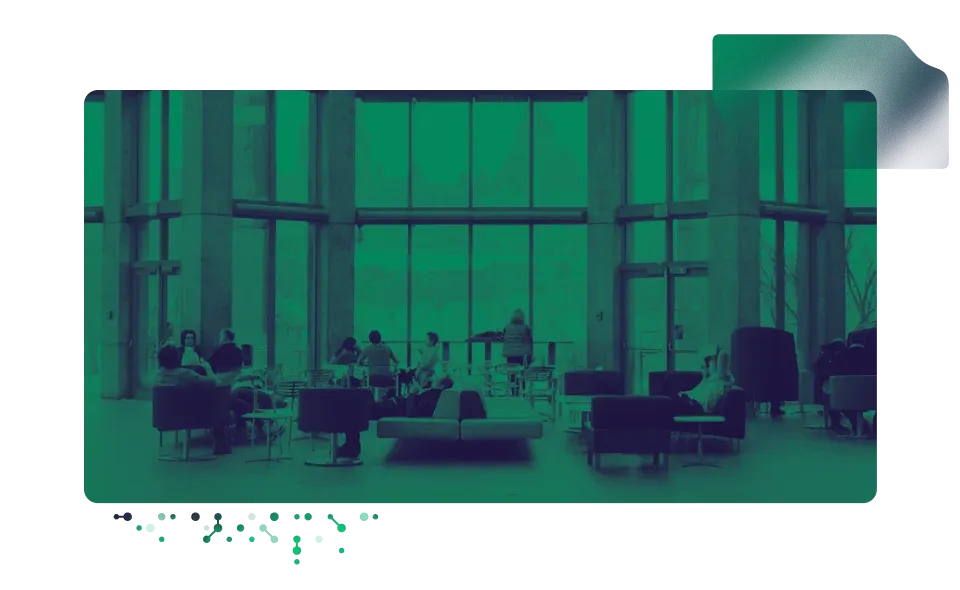A Smarter Future in Special Care Services
Redesigning Estonia's Special Care Service System
Recognitions
Recognitions: Our work has been recognized in the field of social sector and we were nominated in the "Service Design in Public and Third Sector" category at the "Estonian Design Awards 2020".
We have collaborated with the Ministry of Social Affairs to redesign Estonia's special care service system, with an aim to provide a more efficient and flexible service for people with special mental needs and their families.

Project Overview
During this project, we worked together with the Ministry of Social Affairs and the Social Insurance Board to pinpoint the key limitations of the existing special care service. Our goal was to create a flexible, user-centric service system.
This was part of a larger, long-term design process that incorporated several distinct projects and engaged more than 150 stakeholders. These included service users, their families, various state specialists, officials, healthcare professionals, and social welfare workers.
The process began in late 2016, during which we developed an initial service model prototype for the Ministry of Social Affairs and prepared the first pilot project. The first pilot lasted from summer 2017 to summer 2018. We then carried out an impact analysis for the Social Insurance Board, improved the service model based on its results, and prepared a new pilot project. The new pilot started in spring 2019 and lasted until spring 2021.
The project's outcome is a redesigned service model that has been tested with 700 service users across 12 municipalities. The Social Insurance Board has scheduled its full implementation for the period of 2023-2024.
Inaccessible Services: The Inflexibility of Estonia's Special Care System
The inflexibility of the current Estonian special care system renders the service inaccessible to those who need it most. As it stands, the system is not adaptable, making it incapable of accommodating the varied needs and geographical locations of adults with unique mental health requirements and their families. Its lack of flexibility inhibits service users from realizing their full potential and from getting the support they need for as much independence and participation as possible, whether in the labor market or in social life.
Moreover, the system is difficult for the target group to navigate, given its assumption that a person with a mental disorder is capable of applying for the service when needed. To receive assistance, one often has to interact with multiple institutions and undergo as many as nine different needs assessments. For a person struggling with daily life, the stamina or knowledge to maneuver through so many institutions and find the necessary answers may be lacking. The utilization of services is further complicated by the fact that the assessments and action plans developed by these institutions often lack mutual support or compatibility. Additionally, the existing services fail to meet the needs of all service consumers.
User-Centered Models for Better Accessibility
To improve service availability and simplify its use, the service provision needs to be redesigned in a way that considers the needs and concerns of service users and their family members. The service must be human-centric, that is, it must be useful to the user and provide what they really need.
Recognizing a problem in the special care service system, the Ministry of Social Affairs organized a tender to find a solution to the problem.
Detailed Vision for Successful Outcomes
Trinidad Wiseman team, participated in the procurement process conducted by the Ministry of Social Affairs. It became evident from the procurement decision that multiple factors worked in our favour. Perhaps the most weighty among these was our meticulously articulated vision, detailed methodology description, and reasoning. In addition to this, our proposal highlighted scenarios the Ministry of Social Affairs had not anticipated, along with a detailed and compliant timeline of activities. It's noteworthy to mention that in our timeline, we took into consideration the Ministry's vacation periods and public holidays, which certainly gave us some extra points at the time of decision-making.
Our detailed, clear, and user-centric approach communicated to the Ministry of Social Affairs our capacity and competence to deliver high-quality results in alignment with their goals. This experience underscores the importance of meticulous planning, thorough methodology, and the ability to anticipate potential scenarios in successful project proposals
Beginning the Journey: The Special Care Service Overhaul
Our objective was to make the service user-centric, which led us to construct our design methodology in a way that would take into account input from all stakeholders to the maximum extent.
Based on the insights gleaned from our research, we collaborated with the Ministry of Social Affairs to craft a comprehensive national strategy. Beginning with legal and legislative amendments, followed by revamping the structure of specialized care services. We then proceeded with personnel retraining, and modifications to both financing and procurement principles, ensuring throughout that our focus remained firmly on creating a user-centric experience.
The Four-Phase Process to Uncover the Best Solutions
Collecting, structuring, and simplifying necessary information.
Finding solutions.
Applying solutions to design process transformations.
Piloting and collecting feedback.
To reach the final result of the project, we navigated through four distinct phases. During the initial phase, we focused on understanding the needs of our clients and identifying existing issues in the field. To do this, we undertook 38 observational interviews and seven group interviews at a range of specialized care facilities throughout Estonia. These sessions involved end-users, their relatives, service providers, organizers, and specialists from related areas.
The insights we gained into our clients' needs and the field's challenges served as inputs for the project's second phase, the 9 co-creation workshops. Over a span of two months, we facilitated nine of these sessions. Here, we created 15 unique personas and mapped out their customer journeys, which helped us envisage how we could meet a person's needs in the most human-centric, convenient, and optimal way possible in the future.
The third phase saw us develop a prototype of the new service model, during which we defined and visualized the service processes. .
Finally, in the fourth phase, we partnered with 8 local governments and engaged with 40 clients with special needs to pilot the revamped service model. The goal here was to evaluate the model's performance, gather feedback, and refine our service processes. Ultimately, we implemented the revised service model across 12 municipalities, involving up to 700 service users.
The deliverables for the Ministry of Social Affairs Included
- Table of needs and compliance,
- Detailed description of new solution ideas,
- Service journey maps,
- Process diagrams,
- Component-based service model prototype,
- Service-based feedback description (case description from piloting),
- Suggestions for improvement (case description from piloting),
- Seminar materials.
Beyond Proposals: The Key to Project Completion Success
Our experiences show that collaboration with the client greatly affects the project outcomes. It is the only way to develop a service that supremely addresses the client's needs. In the case of special care services project, the Ministry of Social Affairs was highly interested in the progress of the project and contributed to its maximum extent - they were deeply involved in the project, providing thoughtful input and feedback.
The project wasn't without its fair share of risks, mostly deriving from the sheer volume of study material and a high number of interviewees. The Ministry of Social Affairs, with their deep understanding of their field, did a great job preparing international studies, providing us with excellent input to start the project. They helped to find interviewees and did significant work within their organization to bring the right stakeholders to the table.
Despite the fact that this is a complex transformation spanning several years, the Ministry of Social Affairs has been remarkably consistent and patient. They have actively sought opportunities to amend laws to enable the utilization of the service.
The Following Task Division Ensured Successful Collaboration Between Us and the Ministry of Social Affairs
Group Interviews to Clarify the Client's Needs.
Trinidad Wiseman
Prepared and conducted an interview with the team related to the Ministry of Social Affairs' specialized care service project.
Ministry of Social Affairs
Summoned the necessary individuals and participated in the interview.
Getting Acquainted with Existing Materials
Trinidad Wiseman
Mapped and described the content components and necessary resources of services described in the social welfare law that would cover the needs of 8 different types of specialized care service users and other entitled target groups.
Ministry of Social Affairs
Recommended necessary materials (research, etc.)
Individual Observation Interviews with Users and Related Parties
Trinidad Wiseman
Conducted interviews.
Ministry of Social Affairs
Facilitated the contact details of interviewees.
Aligning the Specialized Care System with User Needs and Expectations
Trinidad Wiseman
We compiled a compatibility table of all identified needs and the suitability of the services offered.
Ministry of Social Affairs
Provided feedback on the compatibility table and, when necessary, arranged consultations with experts in the field.
Exploring Opportunities for Improvement
Trinidad Wiseman
We conducted two workshops:
an idea generation workshop and a workshop focusing on the service journey, also known as the customer journey map, from the perspective of service users and their family.
Ministry of Social Affairs
Participated in the workshops.
Visualizing and Describing New Solutions
Trinidad Wiseman
We visualized (touchpoint diagrams, complex and innovative solution sketches, illustrative materials for description) and described (solution, cost components, administration, service package composition) the new solutions. o ensure thorough evaluation, we also sought additional feedback from the client.
Ministry of Social Affairs
Reviewed and provided feedback on the results, and when necessary, provided additional evaluations or organized them.
Describing the Transformation of Service Provision Process by New Solutions
Trinidad Wiseman
We put together descriptions of the processes of providing services that meet the needs.
Ministry of Social Affairs
Reviewed and provided feedback on the process descriptions
Supporting Pilot Implementation, Collecting Feedback, and Conducting Impact Analysis
Trinidad Wiseman
We provided support during the pilot implementation phase, collected feedback, and conducted an analysis of the impact of the new solutions.
Ministry of Social Affairs
Compiled a list of individuals and institutions participating in the pilots, organized consent for their participation, and provided ongoing feedback on the activities and results.
Refining Solutions
Trinidad Wiseman
We documented the refinements and modifications, and delivered the final output.
Ministry of Social Affairs
Provided feedback and coordinated the changes. Accepted the final output.
Participation in Client-Organized Seminars
Trinidad Wiseman
We actively participated in the seminars.
Ministry of Social Affairs
Organized and facilitated the seminars.
Presenting the Results
Trinidad Wiseman
We organized seminars and created presentation materials to showcase the progress and outcomes of the project.
Ministry of Social Affairs
Facilitated the seminars by summoning the audience and participated in the seminars.
Weekly Information Exchange Meetings
Both parties participated in the weekly meetings, ensuring effective communication and information sharing.
Enhancing Lives through User-Centered Design: Insights from Analyses
To assess the usability of the new model, we conducted an impact analysis. The analysis reveals that the new model is flexible and can be applied in municipalities with vastly different capabilities. The new service model significantly reduced fragmentation for the user of the specialized care service and their close ones – they now dealt with a single point of contact and received a comprehensive personal approach.
The system is flexible, accommodating diversity, and thus providing comprehensive assistance and support. Individuals with special needs do not need to know where and what applications to submit. Support persons are there to help and guide them safely through the process. The new service model allows people with very different special needs to lead as fulfilling a life as possible and cope in society without having to leave their home and family. Importantly, the person does not become a burden on their loved ones.
At the municipal level, the new service model takes into account that municipalities can purchase all necessary service components (such as supervision, yoga classes, physiotherapy, psychological counseling) according to specific special needs, successfully incorporating various community resources. A person's living area and the services offered there no longer set boundaries.
A significant change is that the service model allows service providers to act proactively in situations where vulnerable target groups may lack the ability or awareness to apply for the service. It also enables offering support to the relatives of a person with mental health issues even before the person develops a willingness to cooperate.
The new service model has successfully completed two pilot projects and is awaiting the entry into force of legislative changes. The new service model is currently being partially implemented, as the entire system needs to change on such a large scale that current laws do not yet allow it to be fully provided. The Social Insurance Board has already created an action plan titled "Implementing the User- Centric Special Care Service Model in Local Government 2023-2024" to apply the results of our collaboration project.

